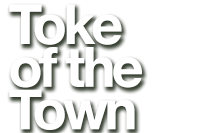When you injure yourself playing a sport, why cover up the injury when you can actually start the healing process?
Treatment Trends
By Ben Reagan
Weekend warriors, serious athletes, obsessive golfers, all ye with active lifestyles, if you’re reading this article you probably have first-hand experience with the side effects associated with opiate narcotics, analgesics, muscle relaxants, and non-steroidal anti-inflammatory medications (NSAIDs) typically prescribed for sports injuries or the wear and tear from a lifetime of “staying fit” or “playing hard.”
Take opiates (please), which interrupt pain signaling to the brain by flooding pain receptors with damping effects. The long term effect is a down regulation of endogenous opiate production.
Technically speaking, “this down regulation appears to have cross over effects across the pituitary gland and hypothalamus, triggering something called
panhypopituitarism, with symptoms of fatigue, obesity, diabetes, insomnia, depression, GI inhibition and decreased libido often resulting,” according to
Dr. Zach Sparer of
Green Wellness.
